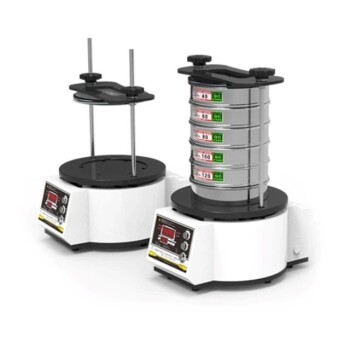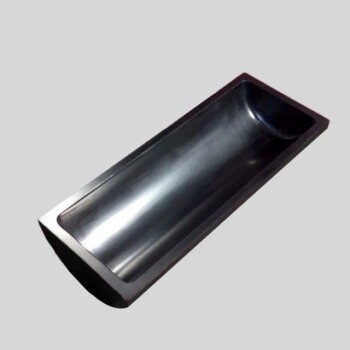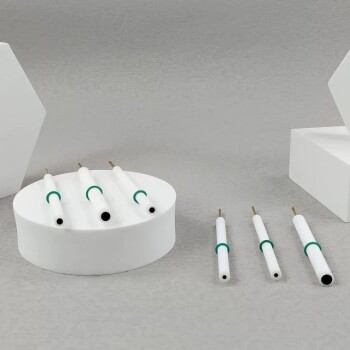At its core, sieve analysis is important because it is a fundamental test for determining the particle size distribution of a granular material. This property, also known as gradation, is not just a measurement; it directly dictates how a material will behave, perform, and interact in a given process. It is a critical, universally accepted method for ensuring product quality, predicting performance, and optimizing industrial processes.
Sieve analysis is not merely a measurement; it is a foundational tool for quality control and process engineering. It provides the essential data needed to ensure a granular material will perform predictably and safely, from the structural integrity of a road to the efficacy of a pharmaceutical tablet.
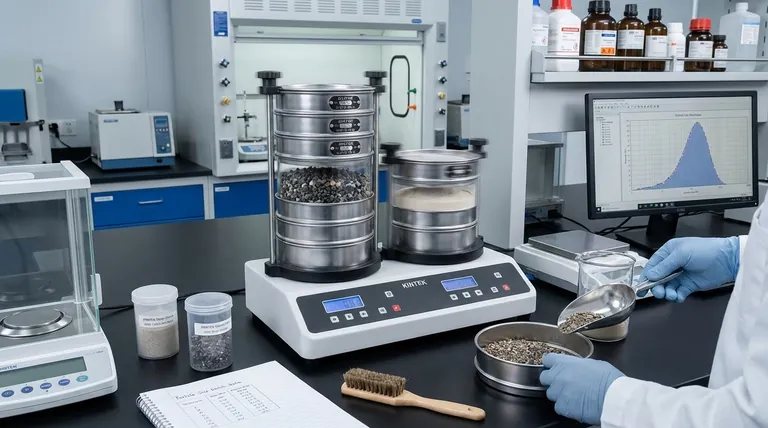
The Foundation of Quality Control
For countless industries, controlling particle size is equivalent to controlling the final product. Sieve analysis is the fastest and most common procedure used to maintain this control.
Ensuring Product Consistency
A sieve analysis provides a quick and reliable snapshot of the particle size range within a production batch. This allows manufacturers to verify that their product consistently meets the required specifications.
A Common Language for Industry
The standardized data from a sieve analysis serves as a mediating device between production, sales, and customers. It creates an objective, universally understood metric for defining and verifying material quality.
Optimizing Manufacturing Processes
Particle size directly influences how materials behave in a production line. Properties like flowability, conveying behavior, and compressibility all depend on particle distribution, making sieve analysis crucial for engineering an efficient process.
How Particle Size Governs Material Behavior
The distribution of particle sizes within a material is a primary factor in its physical and chemical properties. Understanding this distribution is key to selecting the right material for any application.
Impact on Physical Properties
The size and gradation of particles influence a material's density, abrasiveness, solubility, and even its taste in food products. Sieve analysis provides the data to control these outcomes.
Determining Performance in Application
In civil engineering, particle size distribution is critical for performance. It is used to select the proper aggregates for creating strong, durable concrete and asphalt mixes or for correctly sizing screens for water production wells.
Influence on Chemical Reactivity
Smaller particles have a greater surface area relative to their volume. This directly impacts chemical processes, influencing reactivity, extraction rates, and reaction behavior in industries from pharmaceuticals to mining.
Understanding the Advantages and Limitations
While highly effective, it is important to understand why sieve analysis is so prevalent and where its limitations lie.
Why Sieve Analysis is Widespread
The method is popular because it is easy to use, requires minimal investment in equipment, and delivers accurate, reproducible results in a relatively short time. It also physically separates the material into different size fractions.
The Importance of Proper Technique
The results are only as reliable as the procedure. Key factors, such as the duration of the sieving time, are critical. Longer intervals can allow irregularly shaped or borderline particles to pass through, altering the final data.
Limitations for Particle Shape
Sieve analysis works best for particles that are generally spherical. Elongated or flat particles can pass through openings end-on, leading to a result that doesn't accurately represent their true size.
Making the Right Choice for Your Goal
The application of sieve analysis data depends entirely on your objective.
- If your primary focus is manufacturing quality control: Use sieve analysis as a rapid, reliable check to ensure your product meets particle size specifications batch after batch.
- If your primary focus is material selection for construction: Rely on sieve analysis to determine if an aggregate has the correct gradation for its intended purpose, whether in a concrete mix or road base.
- If your primary focus is process optimization: Use particle size data to understand and improve how your materials flow, mix, and react within your industrial systems.
Ultimately, mastering sieve analysis empowers you to move from guessing about material behavior to controlling it with data-driven precision.
Summary Table:
| Aspect | Key Importance |
|---|---|
| Quality Control | Ensures product consistency and meets industry specifications. |
| Material Performance | Determines behavior in applications like concrete strength and chemical reactivity. |
| Process Optimization | Influences material flowability, mixing, and overall manufacturing efficiency. |
| Industry Standard | Provides a universal, objective language for defining material quality. |
Ready to achieve precise particle size analysis in your lab?
Accurate sieve analysis is the foundation of quality control and reliable material performance. KINTEK specializes in providing high-quality lab sieves, shakers, and consumables to ensure your results are consistent and trustworthy.
Let us help you optimize your processes and guarantee product quality. Contact our experts today to find the perfect sieve analysis equipment for your specific laboratory needs!
Visual Guide
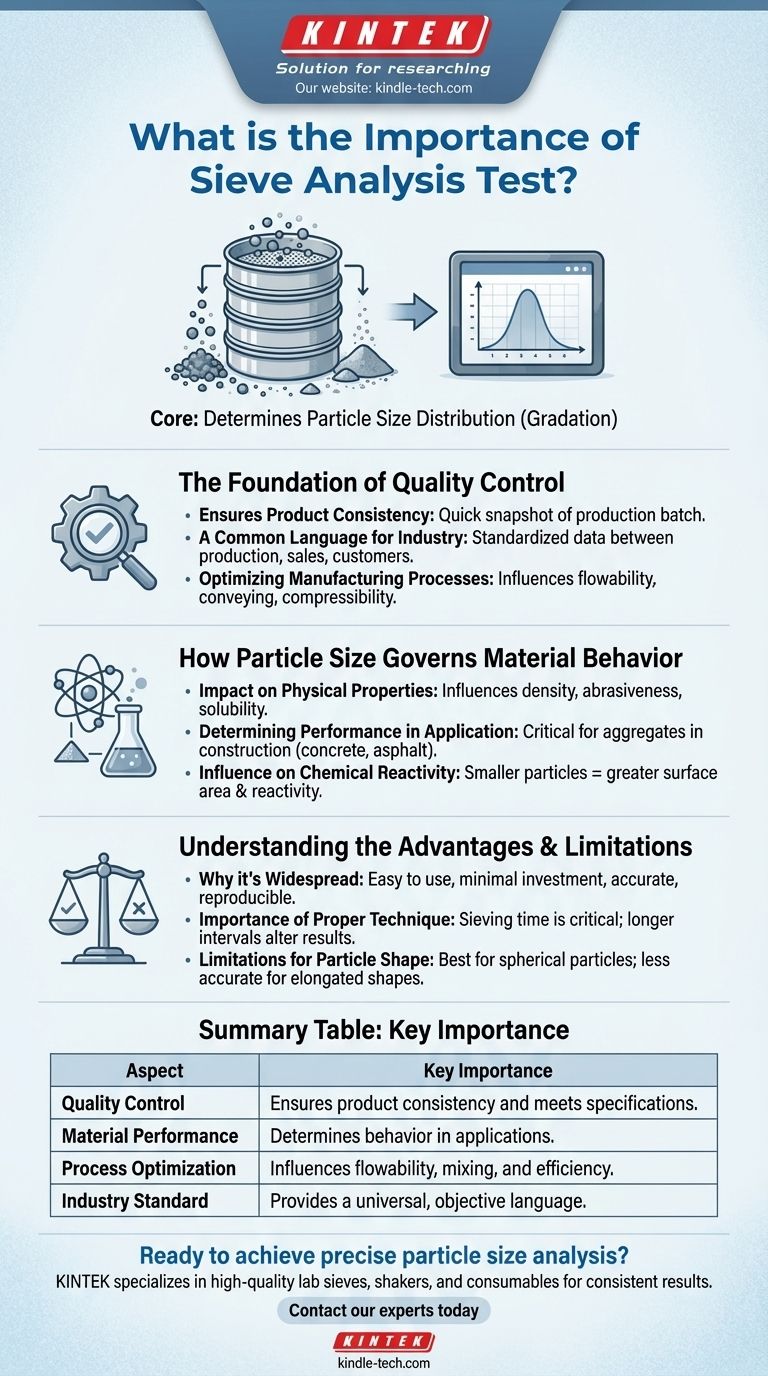
Related Products
- Three-dimensional electromagnetic sieving instrument
- Laboratory Vibratory Sieve Shaker Machine Slap Vibrating Sieve
- Laboratory Wet Three-Dimensional Vibratory Sieve Shaker Machine
- Custom PTFE Teflon Parts Manufacturer for PTFE Mesh F4 Sieve
- Small Lab Rubber Calendering Machine
People Also Ask
- What is the use of vibrating sieve machine? Achieve Precise Particle Size Analysis for Your Lab
- What are the components of a sieving machine? Unlock the Anatomy of Precision Particle Separation
- What are the applications of sieving machine? From Mining to Pharmaceuticals
- What is powder sieving? A Guide to Accurate Particle Size Separation
- What is the speed of a sieving machine? Optimize Vibration for Maximum Efficiency and Accuracy


